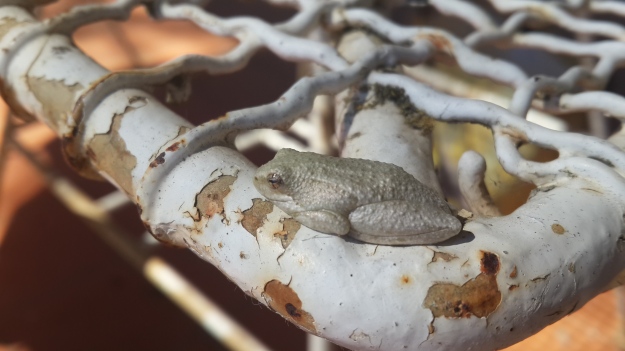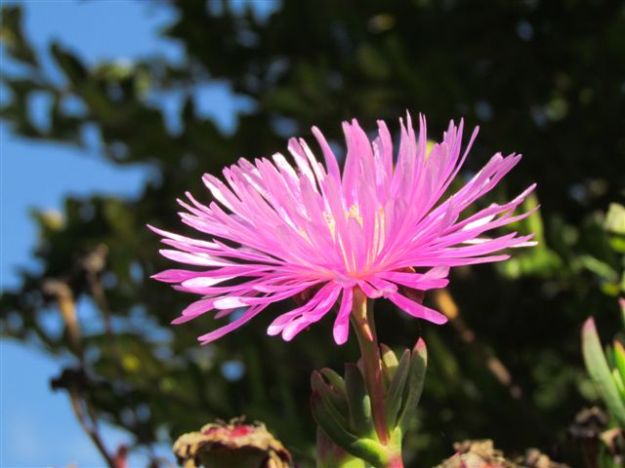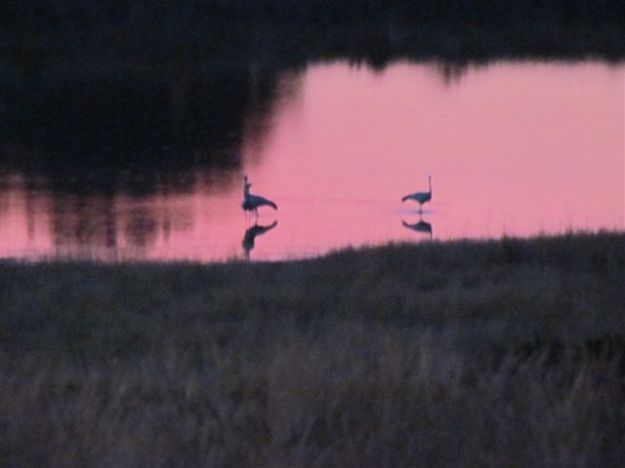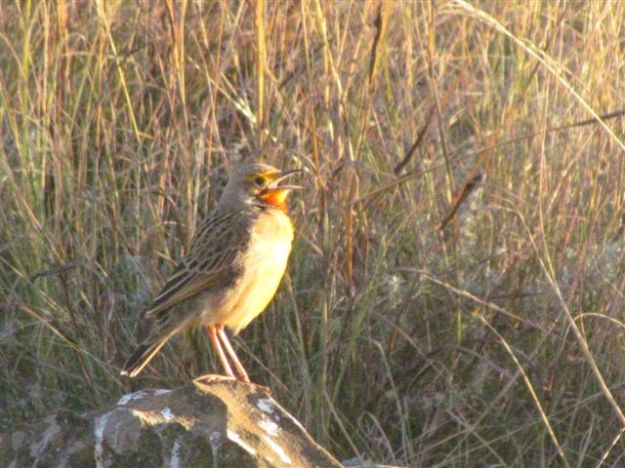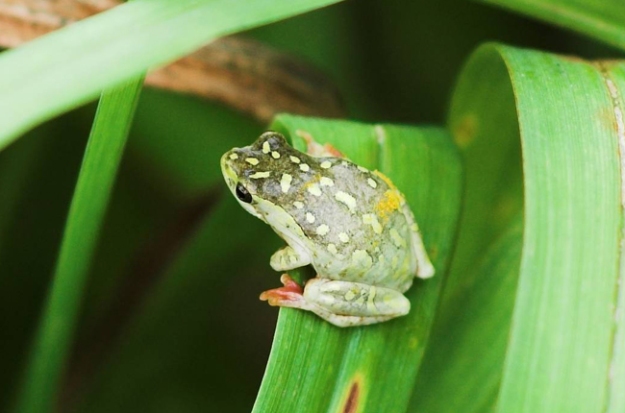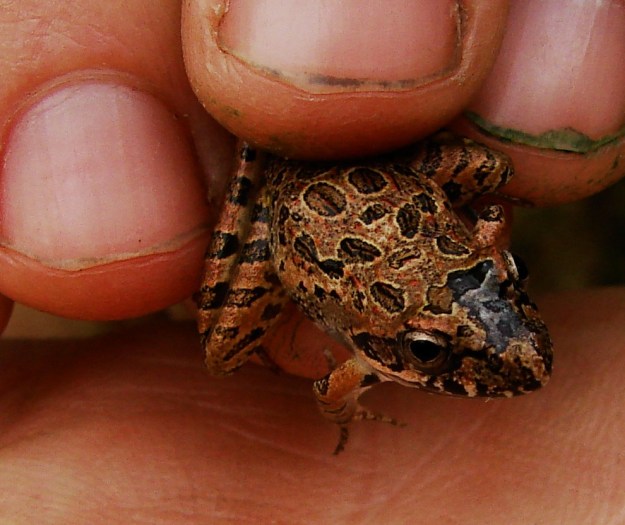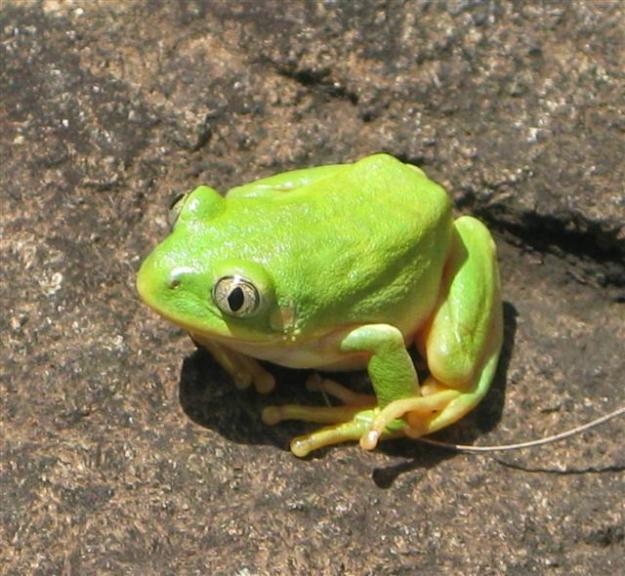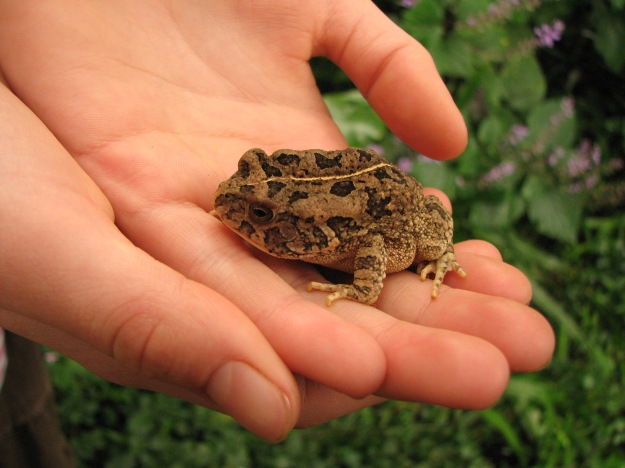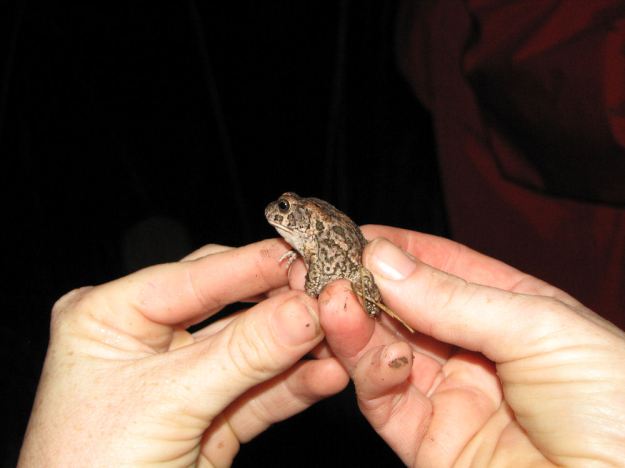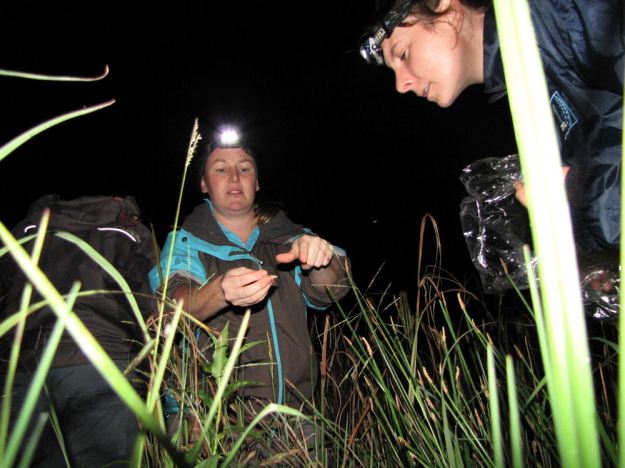– Article written by Nick Evans of KZN Amphibian and Reptile Conservation –
In the KZN Midlands lives a tiny little frog, which few people have seen, and most members of the public have never heard of: the Mistbelt Chirping Frog (Anhydrophryne ngongoniensis).

Appearance
It really is a tiny frog! Their maximum size is a measly 22mm. It’s a very pretty little frog, being a light golden brown colour, with speckles running down its back in a striped formation. It has a dark band on each side of its head.
A species in danger!
The Mistbelt Chirping Frog is currently listed as ‘Endangered’, by the IUCN Red List of Threatened Species. It was previously listed as Critically Endangered, before survey work was carried out by herpetologist and researcher, James Harvey. He had found a few new localities, which came as great news for this species.
It only occurs in mistbelt areas in the KZN Midlands, in high altitude, moist grasslands. So it is not a widespread species at all. Unfortunately for this frog, much of its habitat has been destroyed for exotic tree plantations. Even its habitat type is considered endangered! The last few remaining areas in which this frog occurs in, are rather fragmented by these plantations, isolating populations. These mostly fall under private land, owned by forestry companies. Other threats include invasive alien plants, which take smother these grasslands, over-grazing, and incorrect burning programmes.
The few areas that are still home to this frog desperately need to be conserved, so that the world does not lose yet another species. It may be small, but it still matters. It still plays a role in a functioning environment. Fortunately, it is being monitored by the likes of James and the Endangered Wildlife Trust.

Did you know?
This species was only discovered and described in 1993! That was probably because of its size, and its undistinctive call, a subtle, insect-like, chirping sound.
What’s also interesting about this frog, is that they do not breed in water. Most frogs lay their eggs in water, but the Mistbelt Chirping Frog lays its eggs in leaf-litter!

Survey and photography mission
I was fortunate enough to join James Harvey recently, on some of his survey work. We went to a site near the Ixopo area where he had heard and found this species before.
We arrived in the afternoon, and conditions were perfect. There was a light drizzle, and it was misty too. The common but rarely seen Plaintive Rain Frogs were out in force, and although we did not see any, we heard dozens! Our hopes were lifted when, amongst the Rain Frog calls, we started hearing a couple of Mistbelt ‘Chirpers’! We walked down the slope where they were calling, hoping to find one. James warned me that they were extremely difficult frogs to find, and I soon learnt that he was not wrong. The long grass was so thick. Finding a frog that’s only two centimetres in length was seemingly impossible. Thankfully though, James knew a spot where it should be easier to find them, where the grass was a little shorter and slightly sparser than these thick patches we were searching in.
As we approached this particular area, we could hear a good few calling. Frogs are always easier to find at night, when they are generally more active and call from more obvious positions. However, we thought we’d have a quick try before heading back to camp for dinner, and resuming the search after dark. We were trying to track them down by their call, but as soon as you got one or two meters away, the little blighters would go silent. However, there was one that didn’t stop calling. Luck was on our side, and we spotted one quite high up in a grass tuft, calling. I scooped it up in my hands in great excitement, and called James to 100% confirm what I was holding- it was indeed a Mistbelt Chirping Frog! I was overjoyed! James was too, as despite his research work, he had only seen a handful of them. But our luck didn’t end there.
We returned to the sight that evening. We tracked down one which was calling in a tuft of grass. We were desperately trying to pinpoint its location, as it would emit a chirp every now and then. I thought it was in one place, and James thought it was in another. Their calls can confuse you like that. Eventually, we discovered we were looking in the wrong place. We thought it was calling at the base of the grass, when in fact, it had climbed around thirty centimetres up the grass clump, and was calling from there! Stunned at our luck of now finding two, we then went onto find another three in quick succession! Five endangered Mistbelt Chirping Frog, wow, just wow! We just couldn’t believe our luck! Our hard work certainly paid off!
This frog is one of the most difficult species to find that I have ever searched for. It’s been a species I have long wanted to see, and I feel privileged that my chance finally came around. We are now one of the few people that have actually seen and photographed this frog. What a special little animal.

It really is tiny!
























